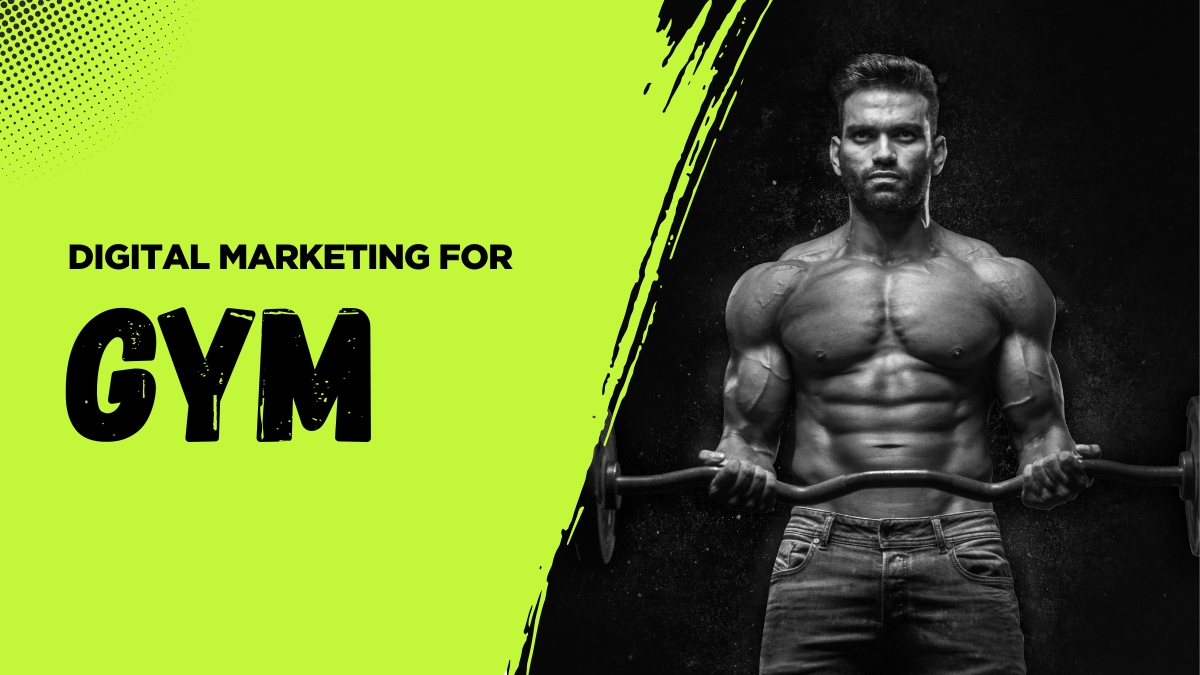
Digital Marketing for Gyms
Finding new members for your gym can feel like a workout in itself. You know you have a great facility, excellent trainers, and a supportive community, but getting the word out is a whole different challenge. This is where digital marketing comes in. It’s your megaphone to reach potential members right where they are: online.
This guide will walk you through the essentials of digital marketing for your gym. We'll break down big ideas into simple, actionable steps you can start using today. You'll learn how to attract new faces, keep your current members engaged, and build a thriving fitness community—all with the power of online tools and strategies anyone can use.
Why Your Gym Needs to Be Online

Think about how people find new businesses today. They pull out their phones and search. They scroll through social media. They read online reviews. If your gym isn't visible in these digital spaces, you’re missing out on a huge opportunity.
A strong online presence helps you:
-
Connect with potential members in your local area who are actively looking for a place to work out.
-
Show people what makes your gym special, whether it's your unique classes, top-of-the-line equipment, or amazing community vibe.
-
Stay connected with current members, keeping them motivated and loyal.
-
Ultimately, all these efforts lead to more sign-ups and a healthier business.
The Many Benefits of Digital Marketing for Gyms
-
Unlike traditional ads (billboards, print), digital marketing lets you reach a large audience for less money—and you can track your results instantly.
-
You can focus your efforts on people who are most likely to be interested in your gym based on their location, age, fitness interests, and more.
-
See what types of posts or campaigns are working, and adjust your strategy fast.
-
Sharing helpful, transparent content makes your gym the go-to spot for fitness information in your community.
-
Digital tools help you stay in touch and keep your current members motivated so they stick with you longer.
Case Study Example:
FitLife Gym noticed that after launching an Instagram campaign showcasing real member stories with before-and-after photos, new memberships increased by 25% in three months, and member retention improved because people felt celebrated and connected.
Nail Your Social Media Game

Social media is a powerhouse for gyms. It's visual, community-focused, and perfect for showcasing the energy of your space. You don't need to be on every platform; focus on where your target members hang out. For most gyms, that means Facebook and Instagram, but you can consider TikTok or YouTube if you have video-savvy staff.
Instagram: Your Visual Showcase
Instagram is perfect for showing off your gym—think of it as your digital shop window. It’s all about high-quality photos and videos.
What to post:
-
Celebrate a member's progress (with their permission, of course!). Share their story with a before-and-after photo or a quick interview. These posts are authentic and inspire others to take action.
-
Show your trainers prepping for class or your front desk team welcoming members. This humanizes your gym and builds trust.
-
Share short videos of exercises or group classes. Instagram Reels or Stories are great for these—30-second snippets of a fun class or a unique move challenge on Mondays.
-
Let your trainers share tips on form, nutrition, and motivation. Quick, digestible advice helps position your staff as fitness experts.
-
Transformation journeys are powerful. Always get permission and focus the message on the member’s effort and commitment.
Tools to Make Social Media Management Easier:
-
Canva: Easily design professional-looking graphics and posts.
-
Buffer or Hootsuite: Schedule your posts ahead of time so your social media stays active, even when you're busy.
-
Later: Simplifies posting to Instagram, especially for visual content.
-
CapCut or InShot: Simple apps for editing videos to create engaging Reels and Story content.
Bonus Tip:
Use interactive stickers on Stories (like polls or quizzes—“What’s your favorite class?”) to boost engagement. Feature user-generated content by asking members to tag your gym in their workout posts and re-share with permission.
Facebook: Your Community Hub
Facebook is great for building relationships and sharing detailed info, and it's still the go-to platform for many adults.
What to post:
-
Class Schedules & Updates: Keep everyone in the loop about class times and new offerings.
-
Events: Use Facebook Events for special workshops, open houses, or charity fundraisers. Encourage RSVPs to boost attendance and send automatic reminders.
-
Community Building: Create a private Facebook Group for members. Facilitate sharing of achievements, recipes, or challenges. This helps your gym feel like a support network, not just a physical space.
-
Live Q&A Sessions: Go live with trainers to answer common questions, discuss nutrition, or demonstrate new equipment. This interactive content helps personalize your brand.
Case Study Example:
River Bend Fitness started a weekly Facebook Live session where trainers answer questions and give a short workout tip. This not only boosted their Page's followers by 40% over six months but also increased class attendance as more people became curious and wanted to join live events.
Get Found with Local SEO

When someone searches "gyms near me," you want to show up first. That’s what Search Engine Optimization (SEO) is all about—making it easy for people (and Google) to find you.
Claim Your Google Business Profile
Your Google Business Profile (GBP) is what appears on Google Maps and as a side box in search. This is free and essential.
Make sure your profile is:
-
Claimed and Verified: Visit Google Business and claim your listing.
-
Complete: Add address, hours, website, services, and attractive photos of your gym and classes.
-
Accurate: Triple-check all contact info and descriptions.
-
Full of Photos: Update regularly with pictures of your gym, staff, classes, and happy members.
-
Packed with Reviews: Ask loyal members to leave reviews (offer a small incentive, like a branded water bottle or towel). Always reply to reviews politely and promptly.
Tool Tip:
Set a monthly reminder to update photos and posts on your GBP. Use the Questions & Answers section to address common inquiries about your gym.
Optimize Your Website for Local Search
Your website is your digital front door. It needs to be clean, informative, and clearly say where you are and who you serve.
-
Mention Your Location: Put your city/region in your site’s headlines, meta descriptions, and several page footers.
-
Location Pages for Multiple Locations: If you have several sites, give each its own page (e.g., “Downtown Location,” “East Side Location”), each with unique photos and directions.
-
Add Schema Markup: If you work with a web developer or builder like Wix or Squarespace, ask about local business schema to make your location clearer to Google.
-
Local Content: Blog about local fun runs, healthy food partners, or member success stories in your city. This tells Google you’re an active local business.
Tool Tip:
-
Use Moz Local or BrightLocal to check your online listings and manage your digital presence across sites like Yelp and Bing.
Beginner’s Case Study:
SunRise Gym, a single-location business, added a blog section focused on local hiking and wellness events. Within four months, website visits grew by 60%, and “walk-in” inquiries mentioned seeing their site rank high for “gyms near [town name].”
Engage and Retain with Email Marketing
Email is one of the most effective ways to talk directly to both leads and members. It’s personal and powerful for building loyalty.
Building Your Email List
-
At Sign-Up: Make sure your membership forms include an email field. Mention that members will get free tips, class updates, and occasional offers.
-
Website Pop-Up: Offer a free class or guide (“5 Workouts for Busy People”) in exchange for an email. Keep your form short for best results.
-
Campaigns at Events: Have a sign-up form or tablet at open houses or fitness events for attendees to join your list.
Recommended Tools:
-
Mailchimp: User-friendly, great for beginners, and free up to 500 contacts.
-
Constant Contact: Another easy tool with good support.
-
ConvertKit: Excellent for easily segmenting lists, so you can target different groups of members or prospects.
What to Send to Your Members
-
Start a new member out right with 2-3 warm, helpful emails. Include an introduction to your staff, class highlights, and any member perks.
-
Share latest news, new class announcements, member spotlights, and helpful wellness advice.
-
Automate reminders for upcoming classes or let members know about last-minute changes.
-
If a member has been inactive for a while, send a check-in email—maybe offer a deal for coming back.
-
Personal touches such as a birthday greeting or a “congrats on your 1-year anniversary” email go a very long way.
Case Study Example:
LiveFit Gym increased their member engagement rate by 30% after sending personalized birthday emails with a free smoothie voucher. Simple, thoughtful touches keep members loyal and encourage word-of-mouth.
Use Online Ads to Reach New People
Organic growth is great, but sometimes you’ll want to speed things up and reach more people quickly. Paid online advertising is highly targetable, measurable, and can help fill classes during slow seasons.
Facebook and Instagram Ads
Both platforms let you focus your ad spend on specific locations, interests, and age groups. This means your ads only reach the people most likely to join.
-
Location Targeting: Set a map radius around your gym (usually 3-5 miles).
-
Demographic Targeting: You can target by age, gender, and interests (like fitness, running, or “Healthy Living”).
-
Ad Types: Try video walkthroughs of your gym, short testimonials, or limited-time offers.
Tools for Ads:
-
Facebook Ads Manager: Controls both Facebook and Instagram ads, even if you don’t have an Instagram account.
-
Canva Pro: Create eye-catching ad images with drag-and-drop ease.
Bonus Tip:
Test different ad copy and images. A/B testing lets you see what works best without wasting budget.
Case Study Example:
Pulse Gym filled up a new beginner Bootcamp class by running a $50 Facebook ad campaign offering the first week free. Over 40 sign-ups came in the first two weeks, and half converted into regular members.
Google Ads
Google lets you show ads to people actively searching for gyms or classes nearby.
-
Keyword Targeting: Use keywords like “gym near me,” “yoga [city],” or “personal trainer [town].”
-
Geotargeting: Limit your ads so they only appear to searches within your city or neighborhood.
-
Ad Extensions: Add extra info like directions, phone numbers, or sitelink extensions to help people act immediately.
Tool Tip:
-
Use Google Keyword Planner to find relevant, high-traffic search terms in your area.
-
SpyFu: See what keywords your competitors are using for ads.
Beginner’s Advice:
Start with a small daily budget (even $5-$10 a day) and watch the results. Tweak your keywords and ad text regularly to improve.
Building a Strong Brand Online
Successful digital marketing isn’t just about ads and posts—it’s about building a brand that people trust and feel excited to be part of.
Tell Your Gym’s Story
Share your journey, your mission, and your team’s personalities. Show why you started your gym and what makes it different.
-
Introduce staff with fun bios on your website and social pages.
-
Share your members’ stories (with permission!) about overcoming challenges or achieving their goals.
-
Post behind-the-scenes peeks, like team meetings, staff celebrations, or gym upgrades.
Leverage Video Content
People love videos—especially when deciding about fitness. Make simple “Day in the Life” or “How to Get Started” videos. Don’t stress about perfection! Authentic, phone-shot videos work just fine.
Tools:
Monitor, Measure, Improve
What gets measured, gets managed. Track your digital marketing efforts so you can keep improving.
Key Metrics to Watch
-
Website Traffic: Use Google Analytics to monitor how many people visit your site and what pages they visit most.
-
Social Media Engagement: Keep an eye on likes, comments, shares, and follower growth. Most platforms offer free insights.
-
Email Open & Click Rates: Email tools show you what people open and click, letting you see what types of content engage your audience.
-
Ad Conversions: Track how many people click or sign up through your ads.
Actionable Tips:
-
Set aside time each month to review your stats.
-
Use these insights to plan new campaigns and adjust underperforming strategies.
-
Don’t be afraid to try new things—digital marketing is always changing!
Final Thoughts
Digital marketing might seem like a lot, but you don’t have to do everything at once. Start small and build as your confidence and skills grow.
-
Claim and complete your Google Business Profile. This is your foundation for being found locally.
-
Pick one social media platform and post consistently. Quality beats quantity! Start on Facebook or Instagram and commit to a simple schedule.
-
Start collecting email addresses. Offer a freebie, class pass, or fitness resource on your website to build your list.
-
Ask for reviews and testimonials. Your happiest members are your best marketers—let their success stories speak for your gym.
As your digital presence grows, you'll start recognizing what works best for your unique gym and your members. Remember: You built a great gym. Now, it’s time to let the world know just how much you have to offer.
30 minutes
Expert Consultation
Terms & Agreements
By booking a free 30-minute consultation, you agree to our terms, including scheduling, cancellation policies, and confidentiality. The session provides expert advice without guarantees of specific outcomes or results.





Leave a Reply
Your email address will not be published. Required fields are marked *